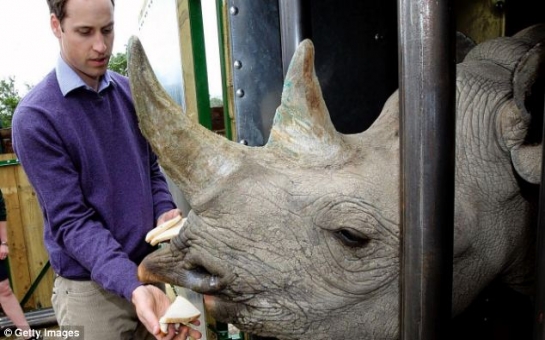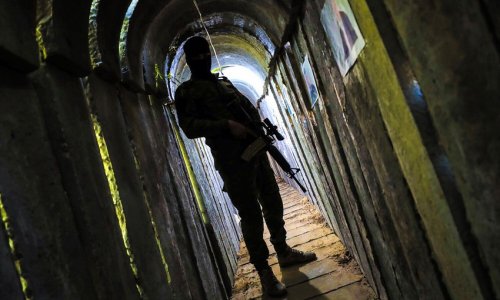Death did not come quickly for their prey. Instead, after heavy-calibre bullets ripped into her hide, the wounded animal rampaged off through the bush. The poachers gave chase and, as would become appallingly clear, managed to run the animal to ground.The creature was still alive when she was eventually found by game rangers in South Africa late last year. But her horn had been hacked from her skull with a machete, leaving a suppurating open wound.The rangers swiftly put the hideously disfigured animal down and, when they carried out an autopsy, removed the body of an almost perfectly formed baby rhino whose birth had been imminent.Such harrowing incidents are no longer rare: another six animals were found butchered a few days ago in South Africa’s Kruger National Park, riddled with bullets from automatic weapons and horns cut from their skulls.In what is being branded the genocide of the rhino, these creatures are being mown down at the rate of more than three a day, fuelled by soaring demand from China and Vietnam, where rhino horn is prized for its supposed medicinal properties. It is now more valuable per ounce than gold, heroin or cocaine.In South Africa alone, new figures reveal a record figure of 1,004 of these magnificent creatures were illegally killed in 2013 — a staggering rise from just 13 in 2007 — while entire populations in other parts of Africa have been wiped out or their stocks driven to the brink of extinction. So grim has the situation become that the head of one of the world’s largest rhino charities has called for wild rhino in Kenya to be rounded up and brought into enclosures to try to prevent the death of a species which has roamed the earth since the Miocene age 23 million years ago, before humans evolved from chimps.Although some game rangers are resorting to injecting poison into the horns of rhino, rendering them useless for any kind of human consumption, and others are hiring Special Forces veterans from Iraq and Afghanistan to provide 24-hour protection, such increasingly desperate measures appear to be doing little to stem the killings.Now, Prince William is entering the fray in a dramatic intervention on the behalf of the beleaguered rhino.He will be supported by the Duchess of Cambridge and Prince Harry. An avowed lover of Africa, Prince William will next month attend a conference at Downing Street on the illegal wildlife trade on behalf of a body called United For Wildlife.The exact details remain a secret, but the Prince is expected to announce the creation of an unprecedented alliance of wildlife bodies and government agencies to co-ordinate a global response to the illegal trade in wildlife, worth £12 billion annually and behind only drug, gun and people smuggling in terms of illegal earnings.The new body will seek to raise awareness of this illegal trade and collect money for grass-roots organisations in Africa which protect rhino herds. United For Wildlife will fund pioneering new ideas on how to safeguard the rhino, whether through medical science, technology or simply on-the-ground operations.William’s plans also include recruiting the support of young conservationists who the charity hopes will have the energy and passion to take up the rhino’s cause.While the initiative will not focus only on rhino and elephant ivory smuggling, William’s interest in these issues was underlined when Max, a six-year-old rhino owned by the family of Jecca Craig — an ex-girlfriend he had holidayed with at her home in Kenya — was killed in 2012. The Prince, a frequent visitor to the reserve owned by the Craig family where Max was reared, was ‘appalled’ to learn of what he called this ‘senseless slaughter’, after Max was shot 17 times and his face left a mass of pulped flesh when poachers cut out his horns.Last night, Ian Craig, the father of Jecca and a prominent conservationist, told me he applauded the steps due to be taken by the Prince to publicise what he called the scourge of rhino killing across Africa.‘All the guns, helicopter patrols, drones and foot patrols in the world will not stop the killing. For centuries, people have given rhino this mythical status — as a cure for cancer or an aphrodisiac. We need to target the end users and the consumers. That is our only hope and the Prince will be a powerful voice for this issue.’Viewed realistically, William has a mighty task on his hands.For, having spent months investigating this lucrative business, speaking to officials and poachers in South Africa, Zimbabwe, Mozambique, Tanzania and Kenya, I can reveal this is a highly-organised criminal enterprise involving African gangsters, corrupt politicians and shadowy figures from China’s underworld.The epicentre of much of the killing is Kruger National Park, which attracts millions of visitors from Britain and around the world to view its spectacular wildlife.There, on a daily basis, rhinos are ruthlessly despatched — with last year’s killing of more than 600 in the park alone a grim record. This follows the deaths of 442 rhinos in 2011 — or one every 16 hours — prompting warnings that the species will become extinct unless drastic action is taken, with killings outweighing new births.Stung by criticism that they are unable to stop the killings, parks officials blame gangs of poachers from neighbouring Mozambique.Yet the butchers in question, who are regularly arrested, are simply the lowliest foot soldiers — impoverished people desperate for cash — while the real riches go to criminals also involved in the drugs and arms trade.Indeed, during a clandestine meeting, one rhino poacher told me how those supposedly involved in the protection of these animals are secretly also involved in their decimation.This rhino killer gave a fascinating — and unprecedented — insight into how poaching is being orchestrated by Chinese organised crime syndicates and both black and white South African gangsters.A thickset man in his 30s — we shall call him Joe — the poacher made clear that the bulk of the carnage is being carried out with the help of parks staff, with threats of death made against rangers who refuse to co-operate.‘We have people scouting on land where rhinos are,’ Joe told me. ‘We approach someone who works on the property and offer him money. These are all poor and know what will happen to them if they don’t agree to play ball — they will get beaten or killed.‘The guy who lets us into the park gets 5,000 rand [about £273]. Then we send a hunter. The one who does the shooting gets 15,000 rand [about £820] — we use local people to do the killing. The park insider will often secretly put feed in a certain area to attract the rhino and make them an easier target for the shooter.‘The bosses then sell the horns on to the Chinese guys for 200,000 rand (£11,000) per kilo. They then ship them out of the country — and sell them on for even more. There is so much money involved we don’t even bother smuggling blood diamonds because there’s not enough money in it.’These underworld figures, who live in palatial homes surrounded by armed security guards in Africa’s capitals, have forged links with the Chinese mafia, with a small number of Orientals based permanently in South Africa to co-ordinate the continent-wide rhino horn trade.Demand is booming in the Far East, fuelled by claims that the potions made from the horns can cure impotence, cancer and Aids.Prices have soared even higher as rhino horn powder has become the ultimate status symbol as a recreational drug in both China and Vietnam, with millionaires there prepared to pay up to £60,000 a kilo.In Vietnam, the newly affluent believe taking rhino horn powder demonstrates their wealth and enables users to increase the amount they can drink, supposedly with no damage to their livers. It has become the party drug of choice.So convinced are these consumers of the magic of rhino horn that Chinese officials have created their own rhino research facility, Window Of Africa, in Hainan Province. Here, 60 rhinos from South Africa are kept in pens as their horns grow ahead of ‘harvesting’ for medicinal use.Yet the horn has no medicinal value. It is simply compressed keratin — the same protein found in human hair and nails — and people would get exactly the same pharmaceutical benefits from chewing or drinking powdered clippings from their toenails.These myths about the properties of rhino horn have seen numbers of the animal plummeting — from 850,000 in the Fifties, to fewer than 2,500 black rhino in the wild today, most of them in South Africa, along with some 16,000 white rhino.Soaring demand is reflected in the increasing numbers of rhinos killed: 13 poached at the end of 2007; 83 animals the following year; 122 in 2009; 333 in 2010 and 964 in 2013. The methods used to kill the animals, which can live up to 70 years in captivity and have only one calf at a time, meaning numbers are slow to recover, are also increasingly barbaric.Fearing exposure from the noise of their guns, poachers frequently use darts to sedate the rhino then cut off the animal’s horn. When the sedation wears off the beasts are left in agony, wandering off into the bush until they bleed to death.Many of the massacres are carried out to order. The Chinese gangsters tell their local African counterparts how many they need at meetings held regularly between the criminal allies, who also smuggle drugs, guns and prostitutes into South Africa.The poacher who spoke to me said: ‘The guys running the syndicates are big-time gangsters — they order and buy between 25 and 50 horns a month. They have mansions, yachts, property abroad, and they always have plenty of drugs and girls for their friends and associates, even though most of them are married.‘They live like they are in the movies. Everything is done in cash. These guys have boxes full of cash, which they keep in their freezers, and they never touch the horns, just issue orders.’Poaching syndicates have also infiltrated the so-called sport of trophy-hunting — a system unique to South Africa where permits are issued for hunters to kill a limited number of animals, including rhino, with the funds supposedly ploughed back into conservation.This so-called sport hit the headlines this month when a hunter in Dallas, Texas, agreed to pay $350,000 (£212,000) in an auction to hunt a rare black rhino in Namibia, a decision that prompted death threats to the hunter, despite his claims that the cash would help to save the species.In one recent case, a poaching syndicate bought dozens of trophy-hunting licences from corrupt officials and used Thai prostitutes to pose as licensed hunters, for a fee, while other members of the gang shot and removed the horns.Syndicates smuggle the horn through porous borders, or grind it down and ship it to the Far East mixed with exports of powdered drinks. At the other end, the drink powder dissolves in water, leaving the rhino horn to be harvested.Calling for remaining rhino to be moved to sanctuaries within wildlife parks, Christian Lambrechts, of charity Rhino Ark, said the poaching gangs are ‘extremely well organised’ and some people from inside the Kenya Wildlife Service have been found colluding with them.‘Of course,’ he added, ‘the majority of parks officials are committed and law-abiding conservationists, often risking death to protect these creatures. But, as parks officials privately concede, the rewards are so huge it is inevitable a rotten minority is involved in killing the animals they are meant to protect.’Clearly, Prince William has sought a worthy but challenging cause for his life after the Royal Air Force. We must hope that his intervention might jolt those buying these ‘magic potions’ into waking up — before the mighty rhino is gone from our world for ever.(dailymail.co.uk)ANN.Az
William's war on the rhino butchers
World
23:58 | 27.01.2014

William's war on the rhino butchers
The animal was heavily pregnant. But her swollen abdomen did not deter the poachers eyeing her from a position downwind. As this magnificent 28-year-old rhino foraged in the African bush, the men stalking her opened fire.
Follow us !










